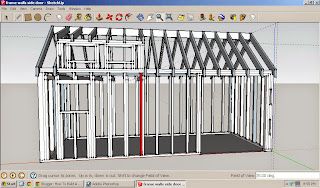Heat and energy are hot topics in the green building sphere. If I were building a house on the ground I would build it to use passive solar heat with thermal mass and local, natural building materials for sure. However, given the extremely limited space and weight restrictions associated with building on a trailer, our green building options are correspondingly limited. Today I want to talk about heating our home.
As far as I can tell, our heating options are electric, propane, gas, or wood. Since we'll be off the grid using solar panels, I don't want to rely on them to heat the house in the winter. Propane and gas have pros for lots of people, but for me, I really don't want to be reliant on fossil fuels that use environmentally destructive extraction methods. The whole point of this house project is to reduce our compliance with the grid and remove as many petrochemical products from our lives as possible. I grew up using wood burning heat and am very comfortable and enchanted with using wood stoves.
There are a couple of beautiful and adorable marine wood stoves available.
This one is so cute, but it takes at least 6 months to be delivered because they custom make each one.
Right now,
this is the one at the top of my list. I'm excited about it and it's actually cheaper than the Dickson's Marine propane stoves.
As far as cooking goes, I've decided to omit an oven. They are big and I don't bake that much anyway. If I need to bake anything I'll have to do it in my dutch oven. Today I discovered that there are alcohol fueled cook stoves!
Here is an article I found useful about them. Aside from ethanol not being a petrochemical, I really enjoy that it isn't explosive. Also, if I get really ambitious I can make it myself. The
Origo 3000 double burner stove is only $350. In the summer I'll try to do most of the cooking out doors on a grille or fire pit. While ethanol or grain alcohol is significantly more expensive per gallon than propane, the pros significantly outweigh the cons at this point.
I really enjoyed reading this blog
post and the quote she posted from Ann Holley,
“It’s really important to have all of your utilities before you begin building,” she said, “so that you know the exact dimensions and what you’ll need to do to install them. It really helps to plan that out ahead of time.” With that in mind, we'll be ordering our utilities quite soon. I just want to sleep on it one more night.















